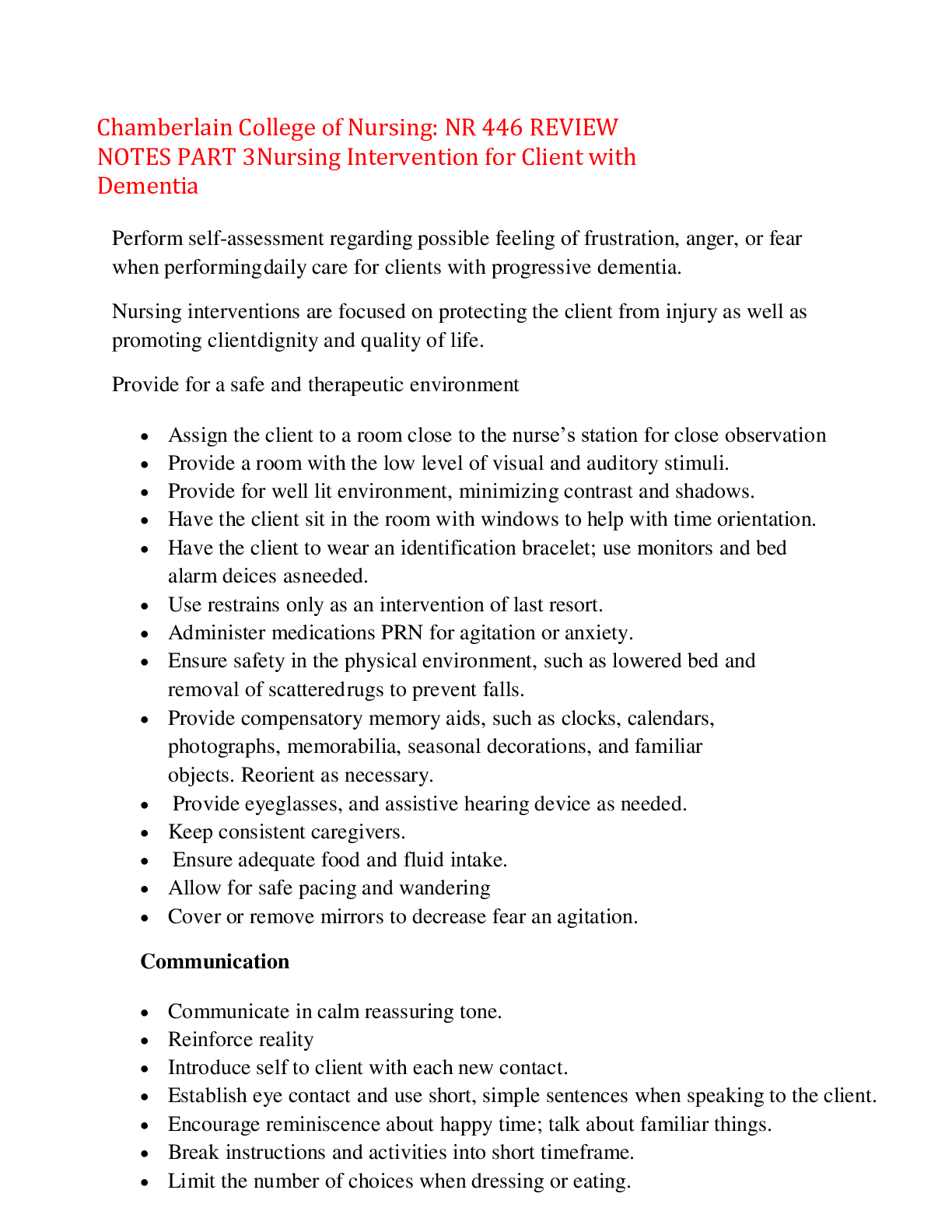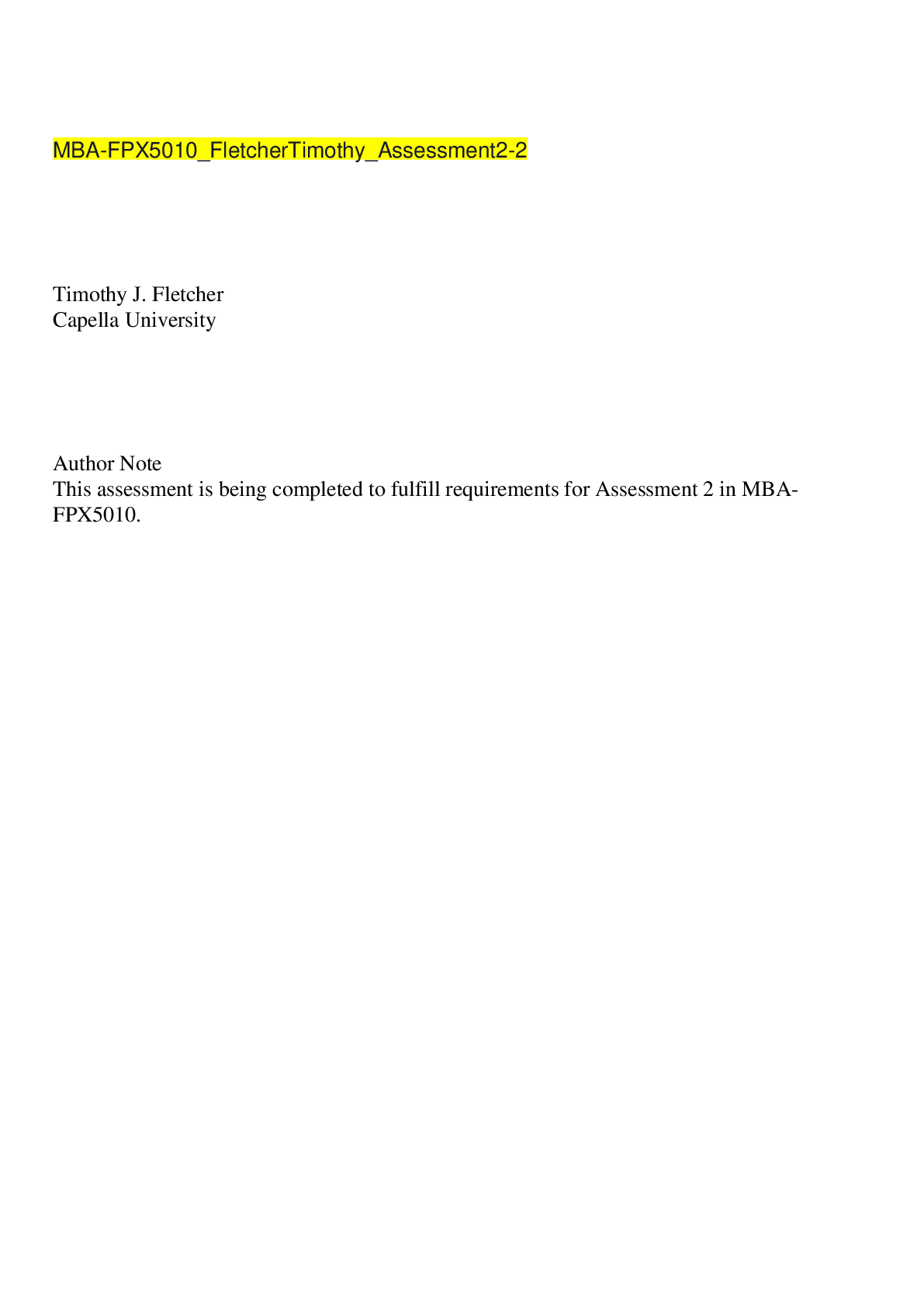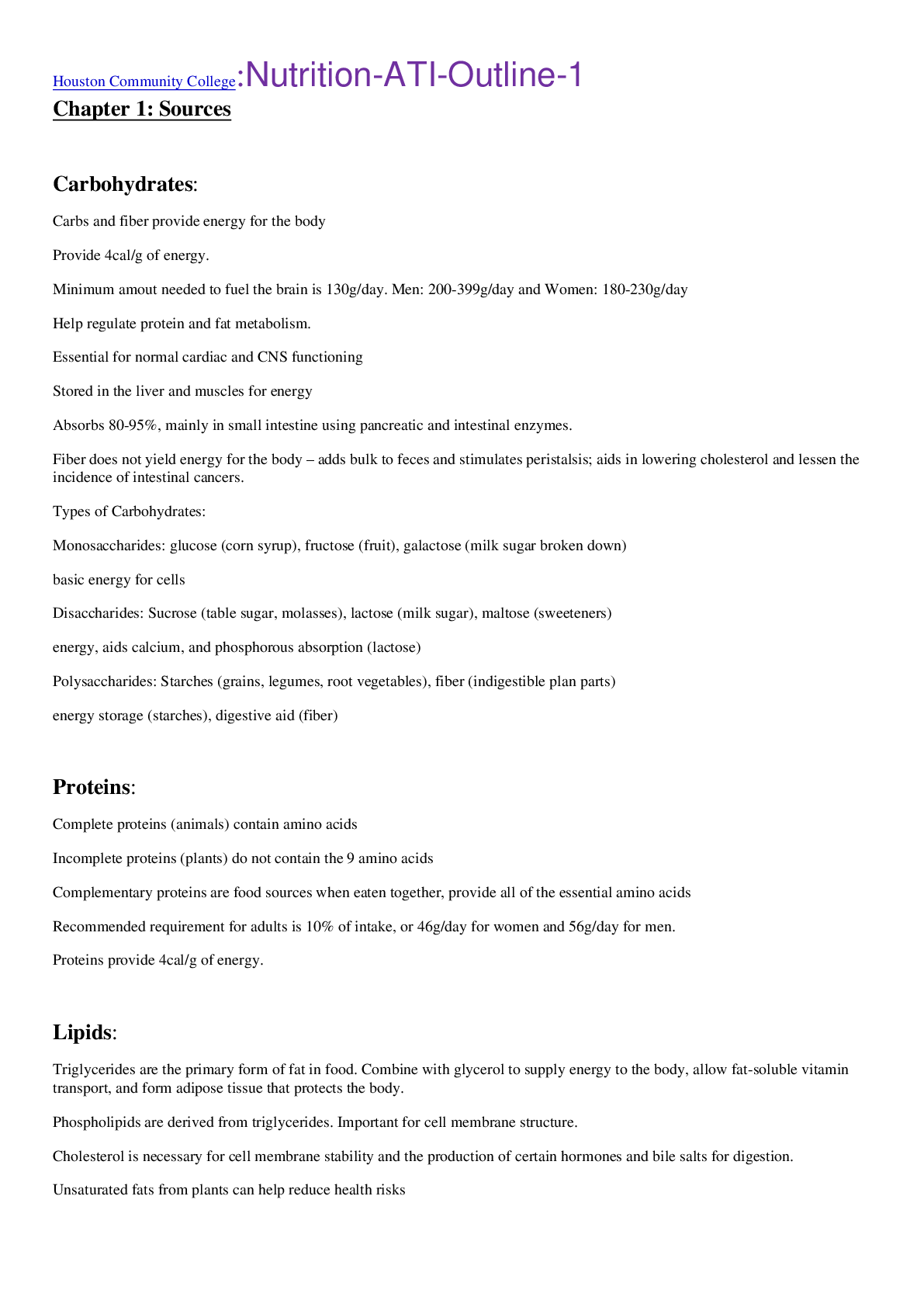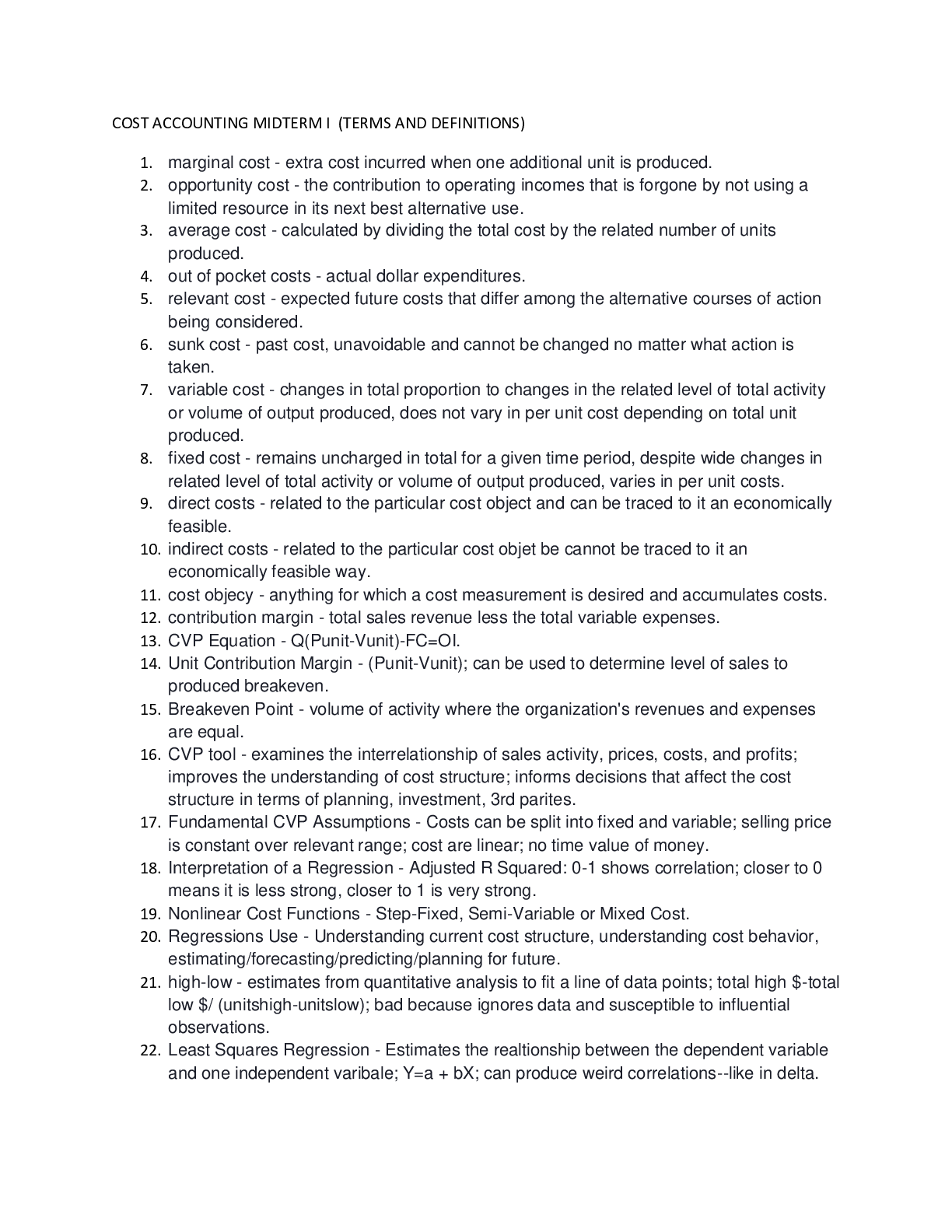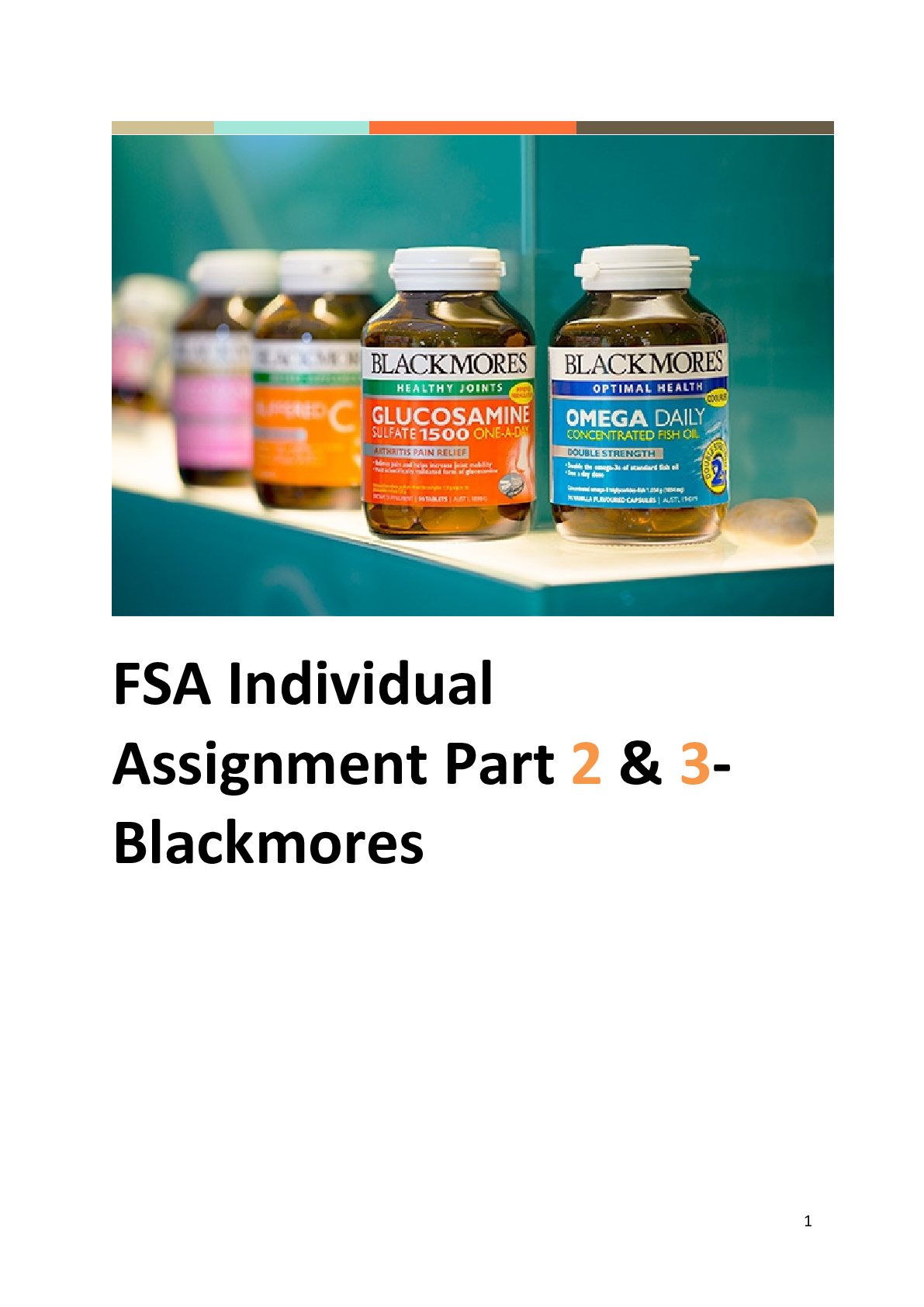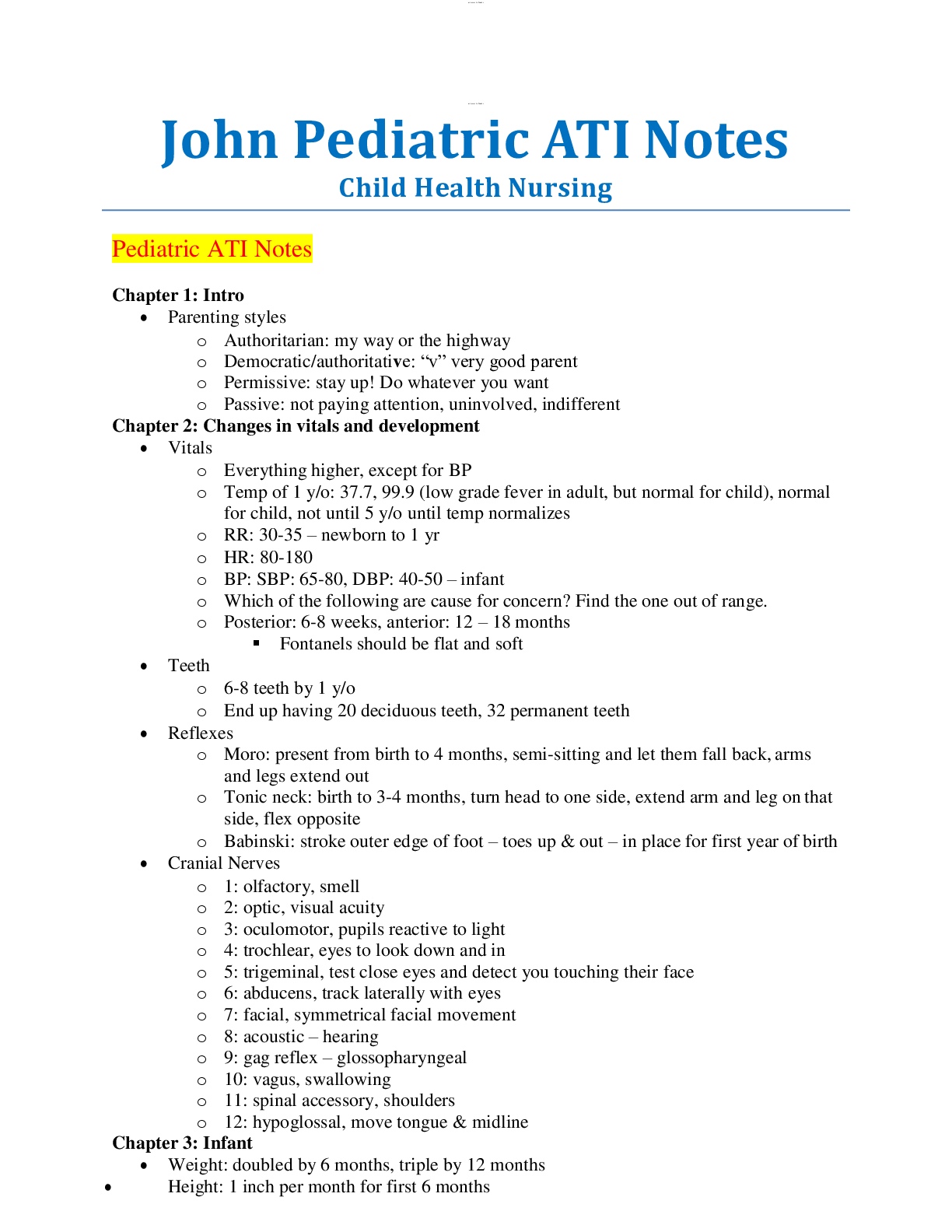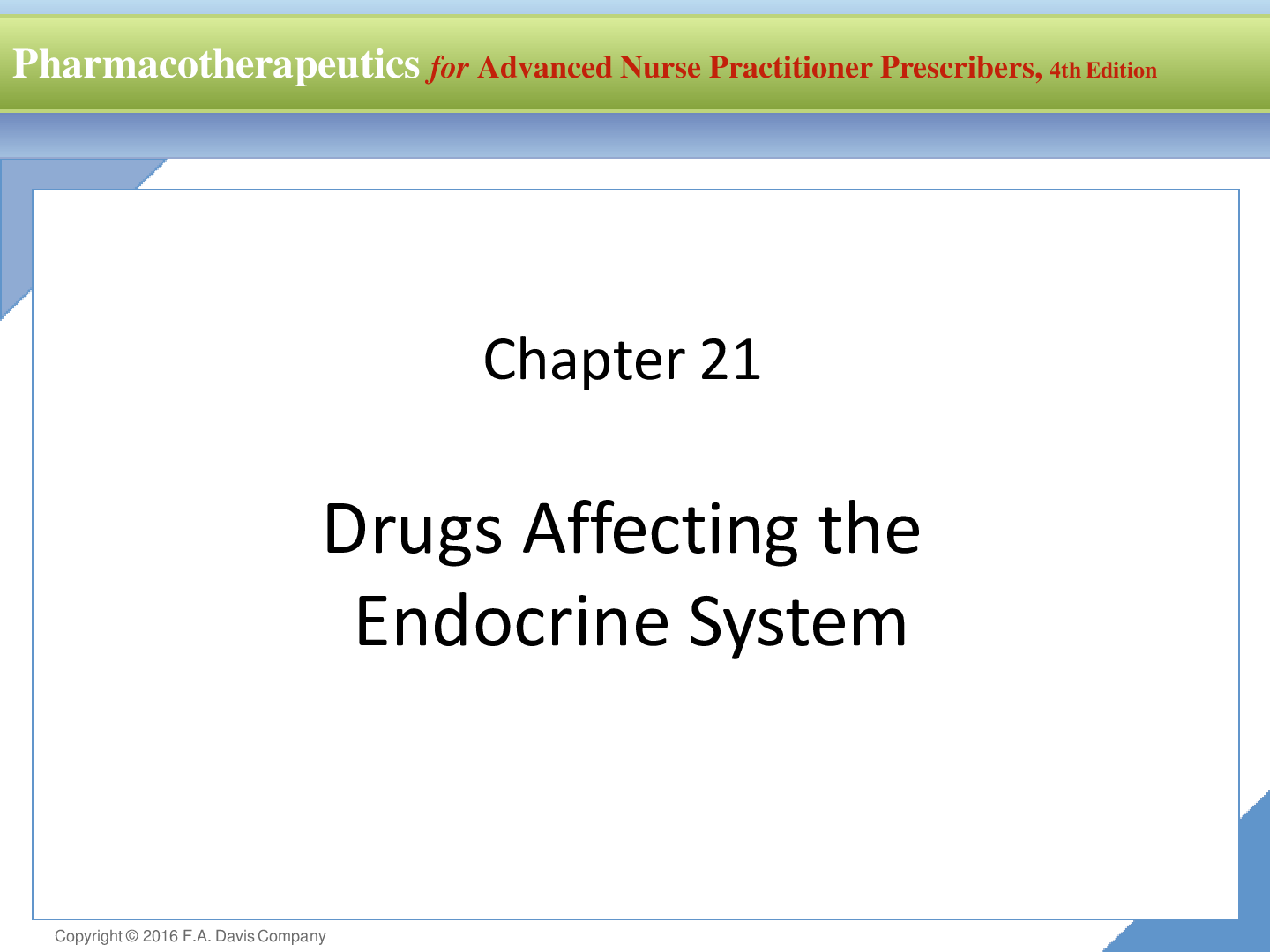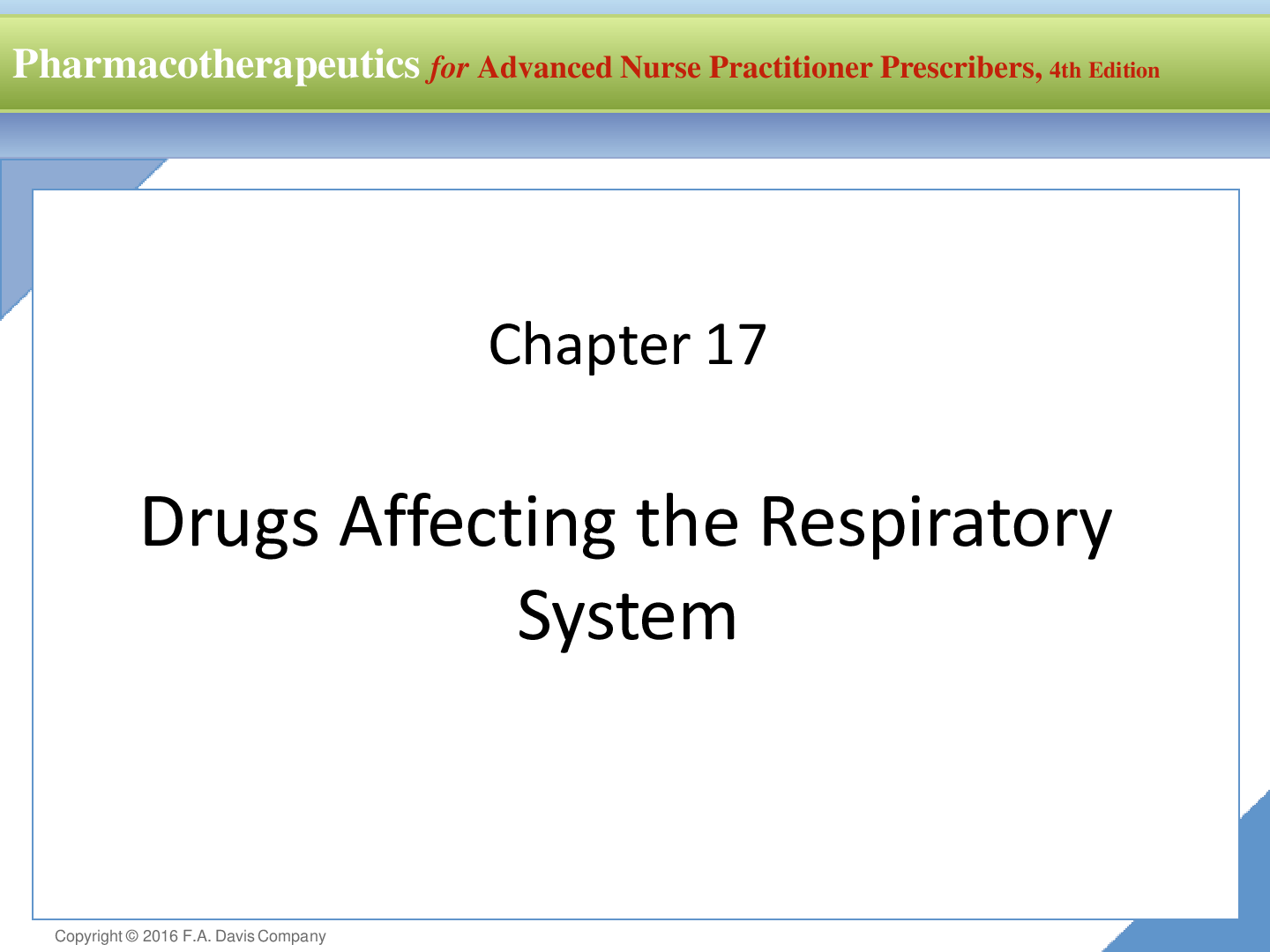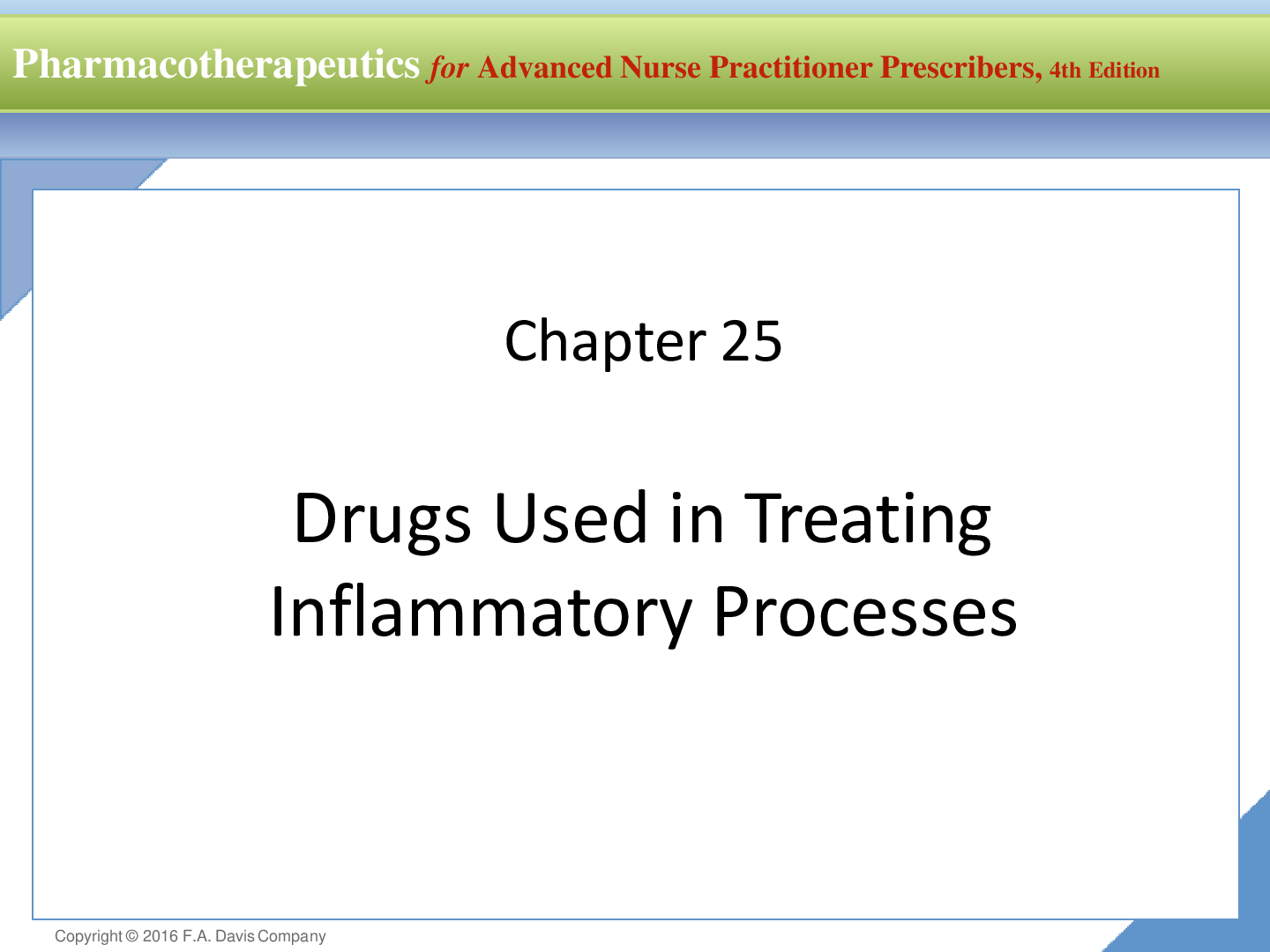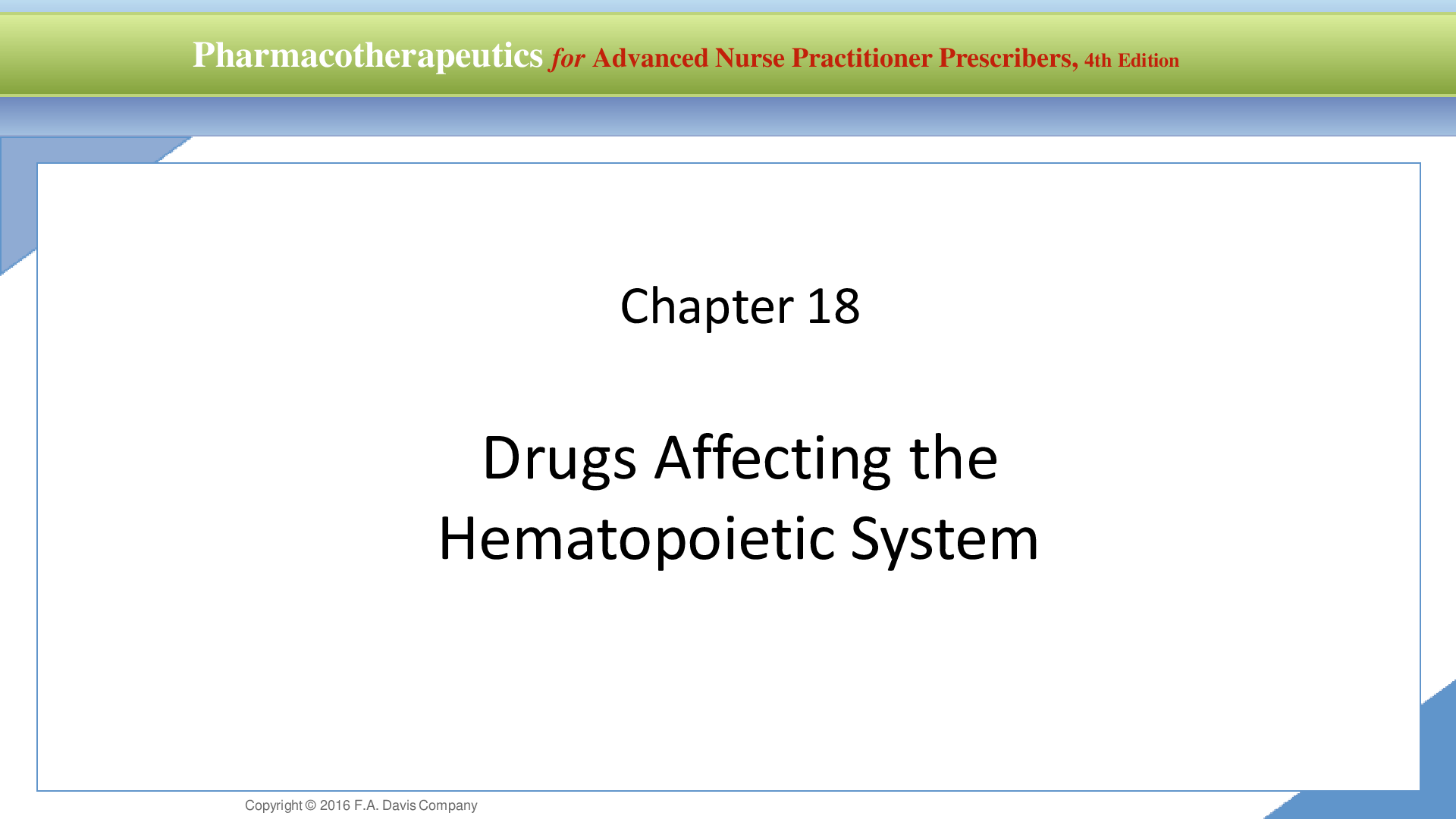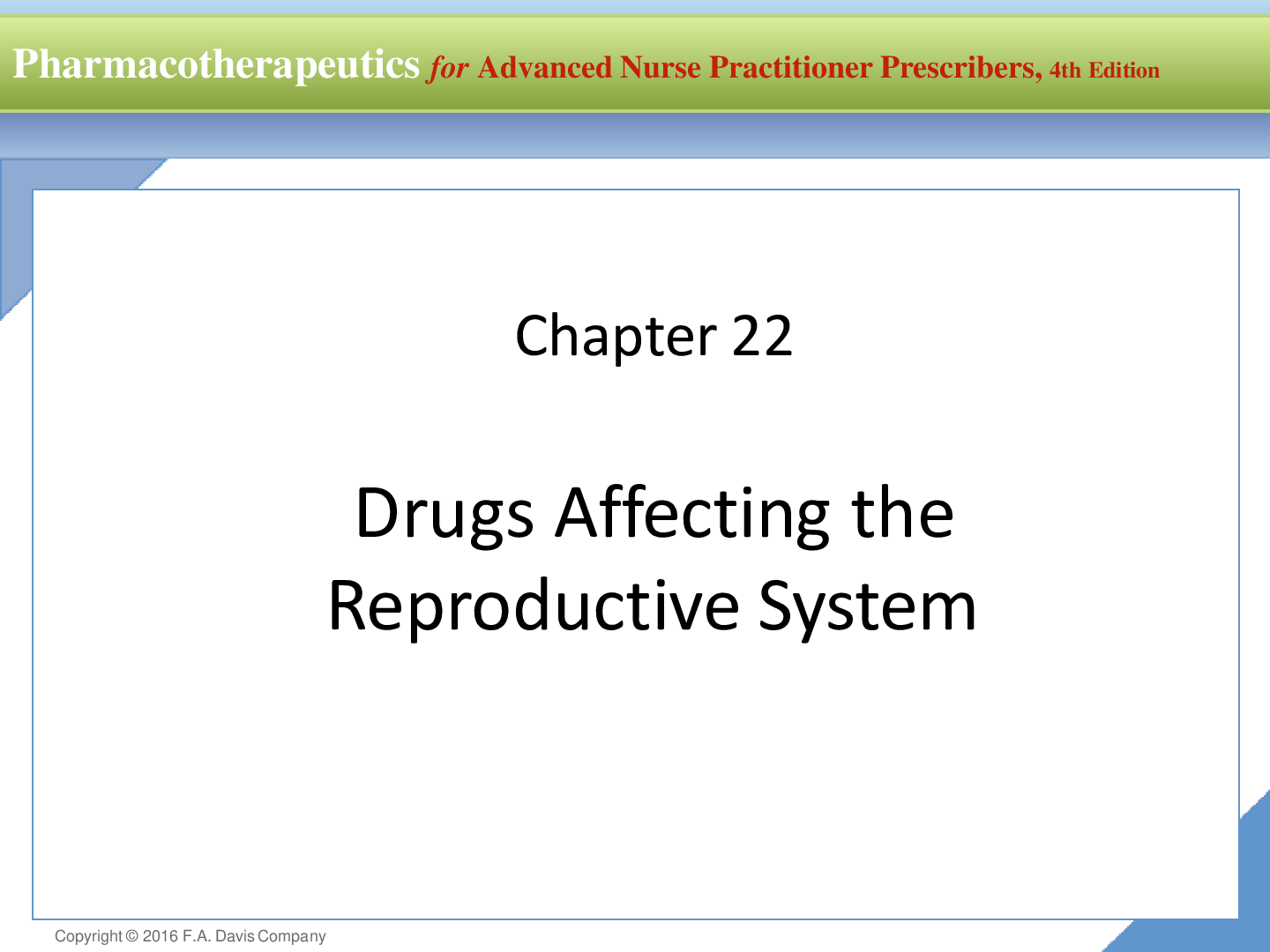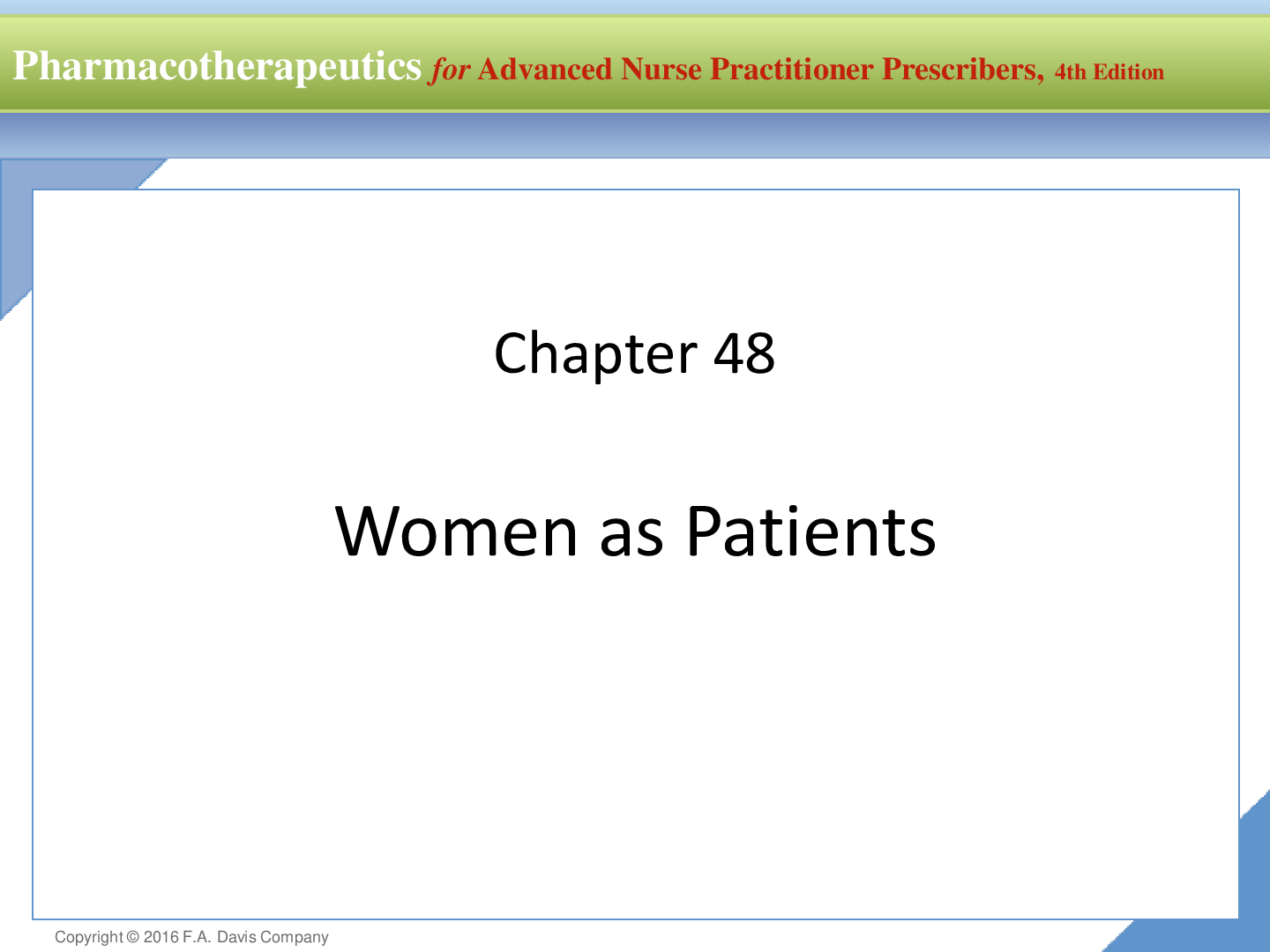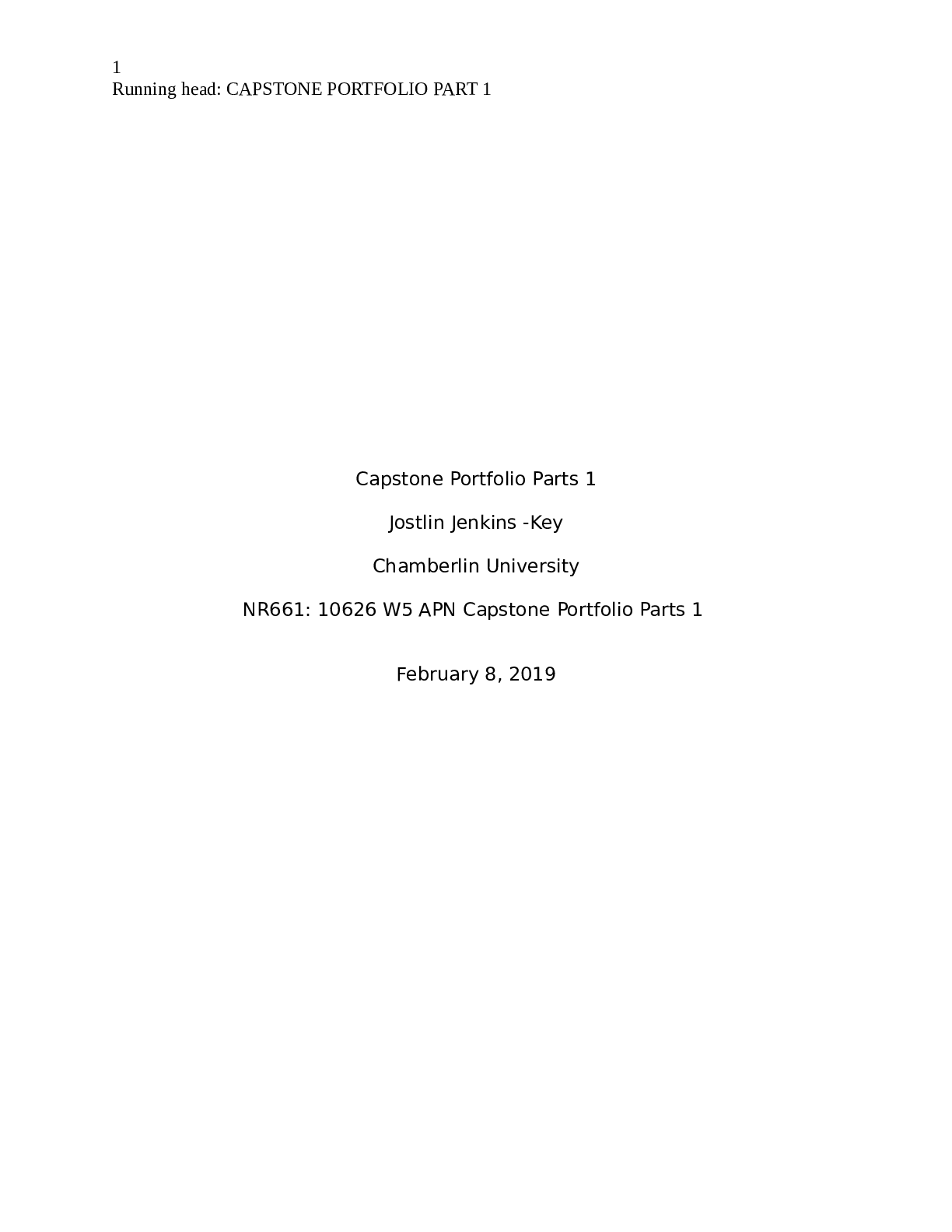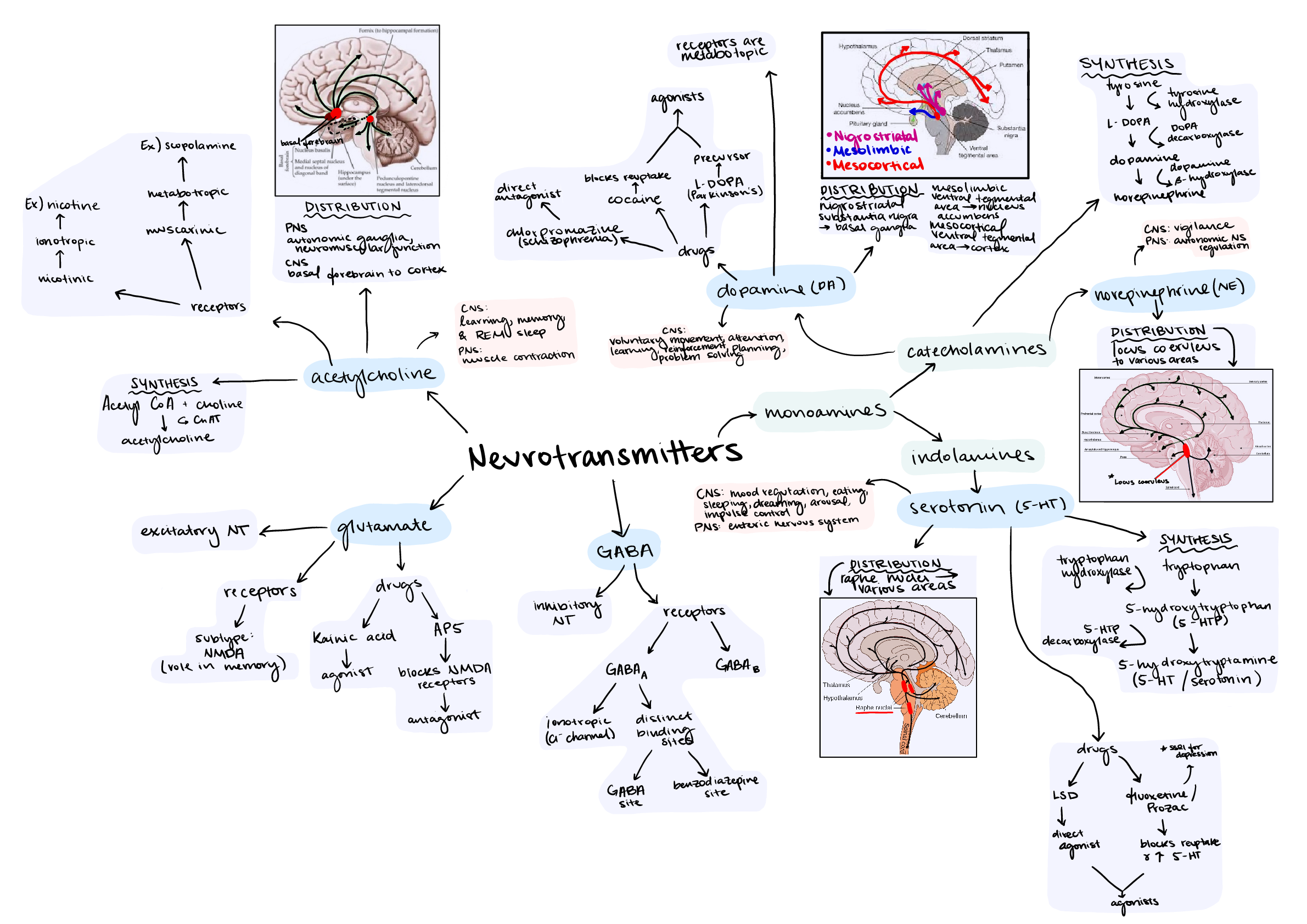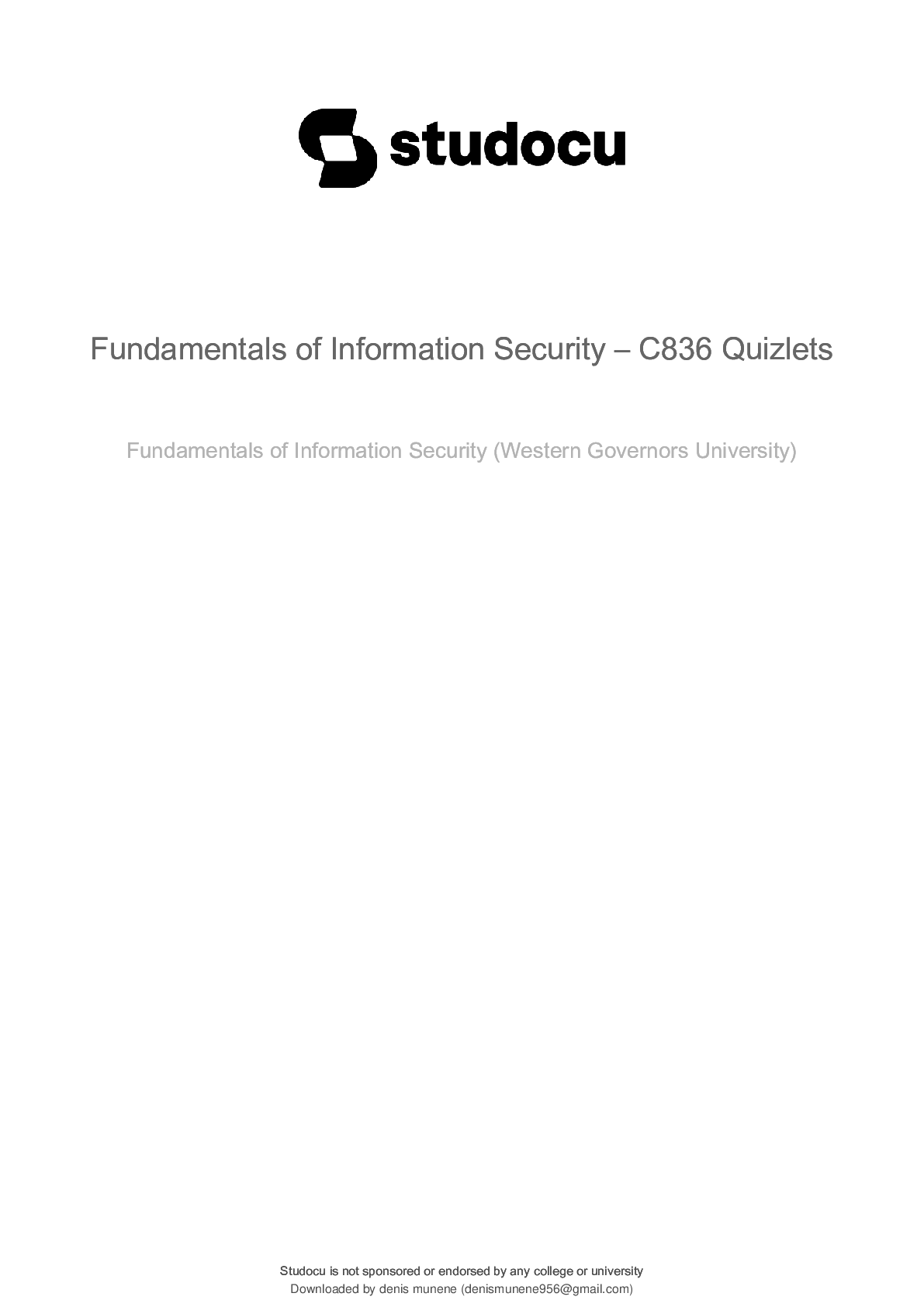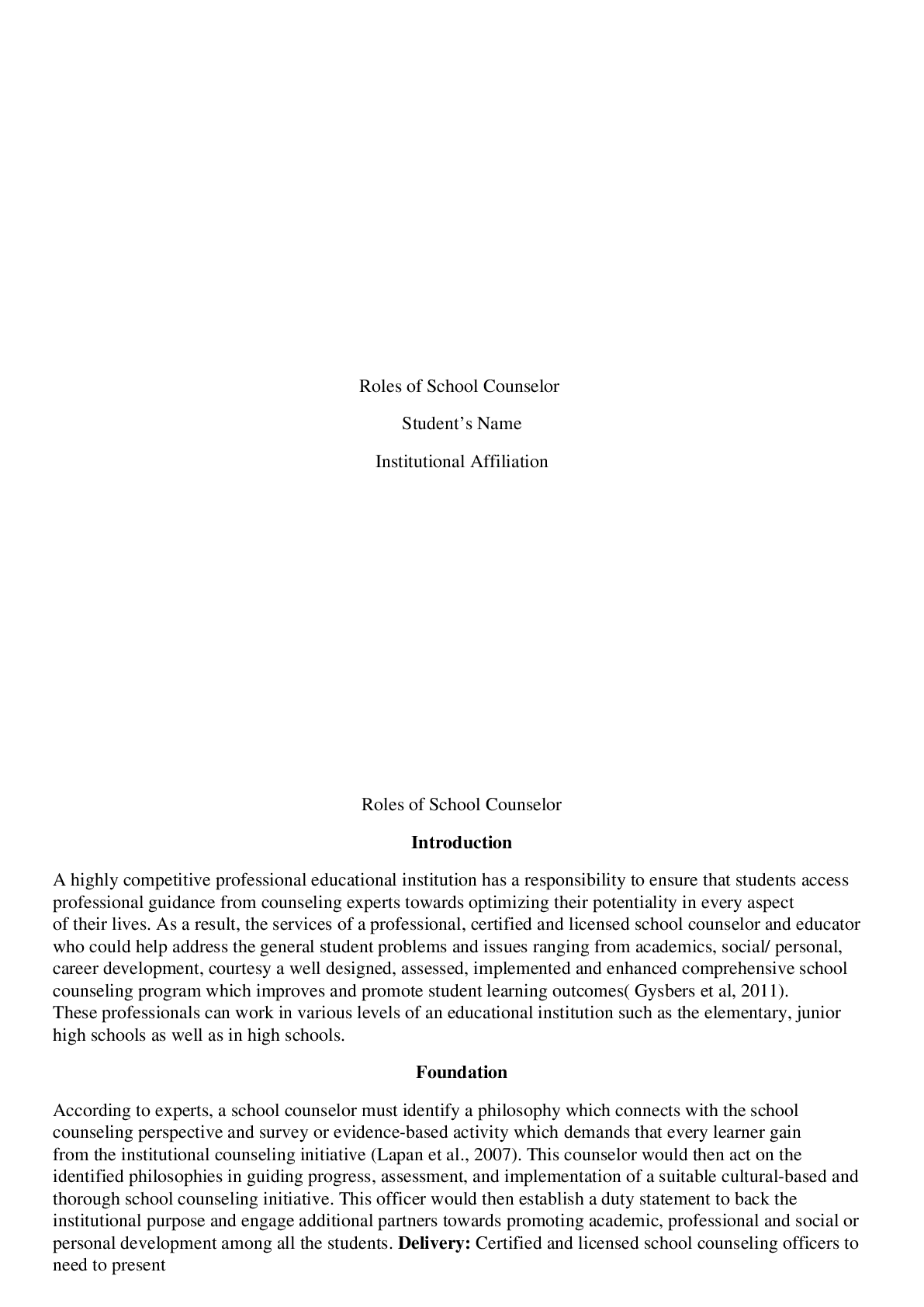*NURSING > Class Notes > Week 1: The Four Spheres of Political Action in Nursing,100%CORRECT (All)
Week 1: The Four Spheres of Political Action in Nursing,100%CORRECT
Document Content and Description Below
Week 1: The Four Spheres of Political Action in Nursing Please discuss the four spheres of political action in nursing. In addition, please develop a brief argument sharing how these spheres are inte... rconnected and overlapping by applying an example from your practice. What are some ethical considerations here? Nurses can make a significant impact on the everyday lives of their patients. Nurses can also contribute in a farther-reaching aspect by the use of their influence and applying their knowledge and skills to address broader issues affecting health populations across communities, nations and globally (Shamian, 2014). According to Mason, Gardner, Outlaw, and O’Grady (2016), the four spheres of political action in nursing are the workplace, the government, the professional organizations, and the community. Each sphere has its own independent functions; however, all 4 spheres work together to create change (Mason et al., 2016). These four spheres mentioned above are the areas where nurses have the opportunity to be politically involved. Nurses can influence policymaking at local, state, and federal levels of government by achieving various positions or participating in activities that relate to policymaking process (Mason et al., 2016). One example in my work place that interconnects these four spheres, is the prescribing of opioid medications. The hospital I work at has policies in place for the doctors ordering opioid medications and for the nurses when administering them. For the doctors, the policy regulates the dose and how often the medication can be ordered. This policy not only helps keeps the doctor and the hospital safe from overdosing a patient; but also follows the California state guidelines for prescribing controlled substances. As for the nurses, the policy regulates the access to these medications, along with the procedure of administering the medication, and the waste procedure as well. For example, nurses should be scanning the patient’s hospital wrist band and the medication barcode at the patient’s bedside within thirty minutes or less of accessing the medication. During waste of these medications nurses need to have a signed witness by another RN to ensure the correct dose of the medications is actually being wasted and the proper waste procedure is followed. Ethical considerations for this topic include: pain management and the subjectivity of pain, under-prescribing pain medication, poorly treated or untreated pain, over-prescribing of opioids, opioid misuse and abuse, addiction, and death (Kotalik, 2012). This can become a problem of beneficence versus nonmaleficence; the obligation to treat the patient’s stated pain versus the risk of harm caused by prescribing opioid medications (Kotalik, 2012). Furthermore, justice and autonomy can also be applied to this topic as well. Justice, to equally treat all patients’ pain as they state it is; and autonomy, for the patient to decide which treatment best helps alleviate their pain symptoms. References Kotalik, J. (2012). Controlling pain and reducing misuse of opioids: Ethical considerations. Canadian Family Physician Medecin De Famille Canadien, 58(4), 381. Mason, D. J., Gardner, D. B., Outlaw, F. H., & O'Grady, E. T. (2016). Policy & politics in nursing and healthcare (7th ed.). Retrieved from http://online.vitalsource.com Shamian, J. (2014). Global perspectives on nursing and its contribution to healthcare and health policy: Thoughts on an emerging policy model. Nursing Leadership, 27(4), 44-51. Kotalik, 2012: The individual and societal consequences of opioid misuse and abuse are serious. The misuse of prescription opioids has become a "public health crisis." Addiction problems to be so severe it is declared as "a state of crisis.” In Ontario, the annual number of deaths involving oxycodone increased 5-fold between 1991 and 2004. This trend corresponds to the 850% increase in oxycodone prescriptions. An analysis of about 1000 deaths from overdose in Ontario indicated that 5696 of these individuals received opioid prescriptions within 4 weeks before death, suggesting that drug prescribing might be implicated in these deaths, per- haps associated with misuse (whether intentional or accidental), diversion, or addiction. A recent study concluded that "opioid-related deaths are concentrated among patients treated by physicians who prescribe opioids frequently."' Similar observations were made in the United States, so this is not a uniquely Canadian problem. The Canadian Pain Coalition reminded us recently that at least 1 in 5 adults lives with chronic pain.' Serious consequences of untreated chronic pain include loss of function and pro- ductivity, economic losses, and increased risk of depression and suicide." Failure to properly control pain, for which opioids might be required, can represent substandard care and can even lead to accusations of negligence. 2016 Opioids Guidelines: If opioids are prescribed, the Controlled Substance Utilization Review and Evaluation System (CURES), California’s Prescription Drug Monitoring Program should be accessed. If CURES indicates the simultaneous use of other narcotic medication, opioid use may be contraindicated. 2014. Medical Board of CA GUIDELINES FOR PRESCRIBING CONTROLLED SUBSTANCES FOR PAIN: https://www.google.com/url? sa=t&rct=j&q=&esrc=s&source=web&cd=1&cad=rja&uact=8&ved=0ahUKEwihy8bDhYXXA hVrwFQKHTAdDM0QFggoMAA&url=http%3A%2F%2Fwww.mbc.ca.gov%2Flicensees %2Fprescribing%2Fpain_guidelines.pdf&usg=AOvVaw0PWsH84Etk5YRQhgtJ-jfh As you are learning this week about the spheres of political action, I wanted to give some additional information on the topic. As many of you pointed out, the four spheres of political action in nursing include the workplace, government, professional organizations, and the community (Mason, Leavitt, & Chaffee, 2007). These are the areas where nurses have the opportunity to be politically involved. An important element to keep in mind is that each sphere has its own independent functions; however, all 4 spheres work together to create change. So, why does this matter and how does it affect us? You have learned throughout your nursing education that nursing practice is highly focused on patient safety, quality of care, outcomes, and evidenced based practice. As you will be graduating and starting your new careers, it will be important for you to review the policies and procedures of your employer, with specific attention to the nursing policies and procedures. What does it say about delegation to a licensed practical nurse? Presence of family members at a code? Expectations to work overtime? Refusing admissions based on acuity? (Allowing family at the bedside in the ICU during shift change, Scope of practice, Abandonment of the patients by the nurses, the nurses right to refusing admissions based on acuity, CNAs/HCTs able to pick up blood products from the lab). You might be surprised at what you find and you will most certainly be amazed at the differences between the policy and procedure manual of a rural hospital and a Magnet hospital. In your workplace, you need to think about changes that will impact the quality and safety of your work environment, patient outcomes, safety, and quality of care, and whether or not evidenced based nursing practice is implemented. Literature often shows that nurses view themselves as politically powerless. They see their role at the bedside as a technical activity, not a political opportunity. What nurses do not realize is the very act of being a nurse makes one politically involved (Cameron, Ceci, & Salas, 2011). This is due to the fact that our practice is shaped by governing bodies, ethical standards, professional standards, governmental standards, and health care itself (Bjornsdottir, 2009). Since we are already politically involved, why not take the plunge and become politically active? Reflect on a health care or nursing practice issue you feel passionate about and would like to change. Share this with the class, the sphere(s) of political action it falls into, and why you think it is important to address. The idea is to get us thinking about different areas we can impact as nurses. This does not have to be a long response. An example: Smoking in the workplace, which is a community hospital. I would like to ban smoking on the hospital campus. Political spheres include the workplace and community, possibly government with the federally mandated health insurance laws rolling out. This is important as the negative effects of smoking and second hand smoke are well documented, and patients requiring hospitalized care do not need to be exposed. And guess what?! There are 2 health care systems in the county that have accomplished this with buy-in from nurses, physicians, hospital administration, and insurance companies!!! Change can happen if nurses speak up and voice their concerns. References Bjornsdottir, K. (2009). The ethics and politics of home care. International Journal of Nursing Studies, 46, 732–739. Cameron, B., Ceci, C., & Salas, A. (2011). Nursing and the political. Nursing Philosophy, 12, 53- 155. doi:10.1111/j.1466-769X.2011.00499.x. Mason, D. J., Leavitt, J. K., & Chaffee, M., W. (2007). Policy and politics in nursing and health care (5th ed.). St. Louis, MO: Elsevier Saunders. The Four Spheres of Political Action in Nursing. According to Mason, Gardner, Outlaw, and O’Grady (2016), studying about health policy is essential in professional development in nursing. They also mentioned the 4 spheres of political action, which are the workplace, the government, the professional organizations, and the community (Mason et al., 2016). The role of government affects throughout one’s life span. It influences nursing and nursing practice significantly as well (Mason et al., 2016). Mason et al. (2016) also stated that nurses can influence policymaking at local, state, and federal levels of government by achieving various positions or participating activities that related to policymaking process. Nurses need to know who are the policy makers and get involve in policy making. Political interactions take place when people get involved in the process of making decisions, taking action that determine who gets what benefits in health care system (Michigan Nurses, 2014). I remember that one of our registered nurse representatives (he was a member of California nurse association) from where I worked attended in a rally for national patient safety issue few years ago and we supported him by signing an agreement sheet since he could make voice for us. This could be one of the activities that nurses can participate to affect health care policy making. When it comes to workplace, nurses work in various settings, such as hospitals, clinics, schools, government agencies, etc. There are internal organizational policies such as clinical procedures and patient care while external policies as state laws (Mason et al., 2016). Where I work, we used to go back to our policies and procedure manuals if we had any debates on patient care. For example, my coworker was talking about the dosage for amiodarone drip for ventricular tachycardia patient, and I didn’t agree with the dosage that he suggested. We searched through online for the answer. However, my manager advised us to look up policies and procedures from hospital organization. It is safe to follow hospital protocol when there is dispute about certain patient care matter. On the other hand, some of the hospital policies have changed due to the result of patient care and research. For example, placing the small alcohol cap on the port of intravenous (IV) tubing set was not common few years ago, however, the research showed significant decrease of infection by using the cab and our hospital made a new policy to use green alcohol cap for every IV tubing port. I feel that nurses also can play a vital role in making or changing internal policies by reporting the consequences of certain practices as well. Mason et al., (2016) stated working with a group helps with empowering advocacy, sharing of more resources, and provides resources, and boosts networking and learning from each other. There are many professional organizations for nurses, such as American Nurses Association, National Association of Clinical Nurse Specialists, Emergency Nurses Association, and etc. Nurses can be more influential by working with other interest groups since they have large funding sources that can form public opinion with advertisements (Mason et al., 2016). For actions in community level, nurses can impact various forms of community as neighborhood, a city, or an online group by finding problems, providing them strategies and support (Mason et al., 2016). The healthcare organization where I currently work serves mainly low income families with lack of support. With the help of Women’s health center, nurses provide prenatal care, family support service including child care. The hospital provides family health education for those needed for free every month. Nurses play an essential role in forming healthcare policy since we are one of the biggest work forces in healthcare system. As presented from the text from Mason et al., (2016), for the high quality and patient centered health care, nurses need to be able to; 1.Practice to the full extent of their education and training2.Achieve high levels of education and training through an education system that promotes seamless academic progression3.Participate as full partners, with physicians and other health care professionals, in redesigning health care system4.Develop better data collection infrastructure for effective workforce planning and policymaking. (Mason et al., 2016, Figure 1-3) By achieving above goals, higher quality care will be provided and better patient outcome that affects general health of nation can be resulted. References Mason, D. J., Gardner, D. B., Outlaw, F. H., & O'Grady, E. T. (2016). Policy & politics in nursing and healthcare (7th ed.). Retrieved from http://online.vitalsource.com NURSING'S VOICE IN POLITICS: The ongoing relationship between nurses and legislators. (2014). Michigan Nurse, 87(3), 17-21 5p. The four spheres of influence is a visual tool that highlights the interactions of government, the workplace and workforce, associations and interest groups, and the community in the role of making health policy (Mason, Leavitt & Chaffee, 2011). These roles are extremely important to Advanced Nurse Practitioners (ANP) in guiding the ANP in influencing policy as well as the importance of the nurse in the process of policy innovation and change. When navigating the vast world of health policy, it is important for the nurse to recognize the players that are involved in the making and the influencing of the policy. First and foremost, the government plays an enormous role in the making and maintaining of policy. Within in the United States, Health Care has been driven by the Affordable Care Act (ACA). In this public policy, many uninsured were allowed health care coverage through a marketplace. Medicare is another government agency that influences health policy and care throughout the country that provides funding health care for impoverished women and children and those over the age of 65. The other factors that influence policy are the workforce, interest groups and the community. Each influence policy in regards to the needs of that group; for instance, a special interest group whose focus is on children with autism can lobby government to include special dispensations for the health care of that group. Another example could be related to the workforce and workplace environment and the influence of ACA on increased funding for educational purposes of nurses (Mason, Leavitt & Chaffee, 2011). In my own practice on a postpartum floor, we have seen an increase in mothers who are addicted to opiates. This addiction can have a serious adverse effect on a newborn and as nurses; we are on the front line in caring for both the mother and the infant during a very challenging period of time in both of their lives. On our unit, we have been striving to provide non- judgmental and effective care but, it is apparent that more must be done to do so. To make this occur, we are researching ways to influence local government to help identify the needs of mothers prior to delivery not only for their safety, but to also provide much needed prenatal care. The problem is that people with addictions live secretive lives that are often in the margins and outside social safety nets. Our need is to develop care coordination with those in the community that are in contact with mothers who are at risk. This could include mental health providers, primary care providers, and addiction counselors to name a few. Then, as nurse lobbyists, we need to come up with a comprehensive plan to influence policy. My workplace is in the initial stages of discussing this issue but, it is agreed that we will see more and more mothers and newborns addicted to opiates and we need to think about the long-term effects of these addictions on the health of our community. The above is just one example of how my workplace is striving to influence policy and health care in the community. It is imperative that nurses and especially ANPs utilize their position and expertise in changing healthcare within the United States (Kostas-Polston, Thanavaro & Taub, 2015). References Kostas-Polston, E. A., Thanavaro, J., Arvidson, C., & Taub, L. M. (2015). Advanced practice nursing: Shaping health through policy. Journal of The American Association of Nurse Practitioners, 27(1), 11-20 10p. doi:10.1002/2327-6924.12192 Mason, D.J., Leavitt, J.K., & Chaffee, M. (2011). Policy and politics in nursing and health care. St. Louis, MO: Elsevier Saunders. A wave of pandemic illness can host a variety of ethical considerations. Please apply the importance of ethics to the process of policy making regarding pandemic outbreak and other future pandemic issues. Every year prior to the flu season, employees at the hospital where I work, line up to do a tuberculosis screening and to receive an influenza vaccination. Most are compliant and complacent but, some complain that the policy does not allow for personal choice and conviction and that individual rights are being infringed upon with threats to employee that the job that they hold will be unavailable unless they receive the vaccination. This brings up interesting ethical questions when looking at the community’s health as a whole in regards to an individual’s freedom of choice. Many communities throughout Wisconsin are seeing an uptick in diseases that can easily be prevented by simple vaccinations. Pertussis, measles and mumps have all had outbreaks in areas in this state and it goes without saying that it is due to people choosing not to be immunized or for some other reasons such as lack of resources or education. When it comes to vaccinations, the argument of those who would prefer not to have them is that: they do not like needles; they do not believe that vaccinations are effective; and/or they are afraid of the side effects of the vaccinations (Goodband, Oakley, Rayner, Toms & Brostoff, 2014). This is a serious ethical dilemma due to the fact that citizens are afforded free choice but, to what end? It is important for communities to protect the health of its citizens as a whole which would preclude the rights of the individual. As healthcare workers, it is a fine line to help determine what public necessity is and what would infringe on the rights of individuals. References Goodband, A., Oakley, S., Rayner, J., Toms, J., & Brostoff, J. (2014). Influenza: disease, epidemiology and the importance of vaccination uptake by healthcare workers. Primary Health Care, 24(7), 33-38. Retrieved from http://web.a.ebscohost.com.proxy.chamberlain.edu:8080/ehost/detail/detail? vid=7&sid=958432d6-c520-4ba4-bfbe- 603cc807cca9%40sessionmgr4003&hid=4214&bdata=JnNpdGU9ZWhvc3QtbGl2ZQ%3d %3d#AN=103993395&db=rzh Retrieved from http://web.a.ebscohost.com.proxy.chamberlain.edu:8080/ehost/detail/detail? vid=7&sid=958432d6-c520-4ba4-bfbe- 603cc807cca9%40sessionmgr4003&hid=4214&bdata=JnNpdGU9ZWhvc3QtbGl2ZQ%3d %3d#AN=103993395&db=rzh [Show More]
Last updated: 1 year ago
Preview 1 out of 13 pages

Reviews( 0 )
Document information
Connected school, study & course
About the document
Uploaded On
May 29, 2021
Number of pages
13
Written in
Additional information
This document has been written for:
Uploaded
May 29, 2021
Downloads
0
Views
78



